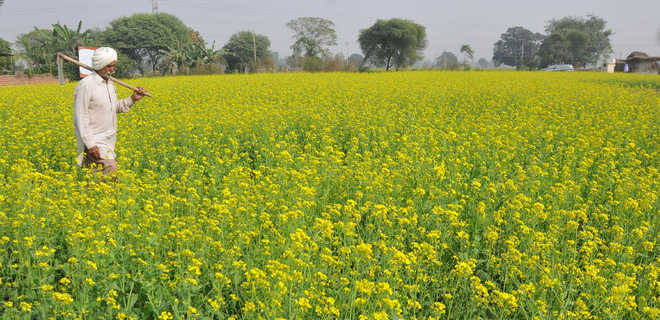Tide of yellow heralds onset of Basant Bahar
Dr Roma Uppal
Vasanta in Sanskrit and Basant in Urdu means spring. The festival is about a lilt in the air, lifting of spirits and a renewed vigour in our steps. New leaves and flowers awaken from slumber. Marigold and mustard predominate as Basant sets in.
Nature always keeps its date with Basant Panchami. The festival is celebrated with fervour all over the country. Yellow is the predominant colour, be it in saris, chunari, bands, turbans or chaddars, that dot the landscape.
In states like Gujarat, Punjab, Delhi and Rajasthan, flying kites is the predominant activity. In Bihar, UP and Bengal, it is traditionally celebrated as Saraswati Puja. The Goddess of Learning is accorded honour in academic institutions. Saraswati Vandana is performed to invoke the blessings of the goddess to marks the start of any academic activity, be it convocation or a literacy fest.
When I was a student, in the mid 50s, in my revered alma mater, Benares Hindu University, the ritual of celebrating Saraswati Puja was a de rigueur, in which the students and teachers wore yellow saris/dhotis, all dyed in the same shade. Our blouses were of a different colour to identify our class. There would be a “preeti bhoj” in which we were served a Basanti meal by our teachers on pattals sitting on durries on the floor.
It was a revered tradition between the teacher and the taught. We would keep our books in the puja pandal, the puja culminating with an application of gulal, indicating the advent of the month of Phagun and Holi. At PGIMER, there has been a tradition of Saraswati Puja on Basant for the last 50 years. The entire faculty and students participate in the puja. Children are made to seek the blessings from Goddess Saraswati Ma before leaving for school on the occasion.
There is a Sufi Basant where yellow chadars are offered at the shrines of Nizamuddin Auliyah. The Chisti dargahs come alive with qawwals singing in high spirits taking you to anhad consciousness. Celebrating Basant was done by the Hindus to highlight the cycle of nature. It was much later that the Sufis imbibed this celebration in their culture. Amir Khusro donned yellow clothes and sang “Sakhi Basant Aayo Ri...” Since then, every year for more than seven centuries now Sufi Basant has become a regular festival of joy.
The day is auspicious for ceremonies, especially weddings. In my family, my parents, my nephew and yours truly all tied the nuptial knot on Basant Panchmi! The color yellow stands for wisdom, it has the power never to go unnoticed. All over the world, especially in Asia, it signifies happiness, warmth and sunshine.










